Let me start this article by saying that Sonos is good. Sonos is REALLY good. There’s a reason why their name has become synonymous with multi-room audio, even reaching the level of ubiquity enjoyed by brands like Kleenex and Coke.
When people think of a whole home audio system, they call it a “Sonos System,” regardless of the manufacturer, and there’s a good reason for this. Not only was Sonos the first company to get multi-room right by simplifying all the intricacies of latency and delay, they single-handedly brought that Apple “Automagic” element into the space.
At Audilux, probably 90% of our multi-room installs incorporate Sonos in one way or another. It just works, but the recent supply chain issues and very tight constraints on Sonos’ most popular product for installation (the Amp) left me wondering if anyone else could deliver a similar experience.
A cottage industry of competition has sprung up since Sonos began its undisputed reign, each with varying levels of success. We’ve tested everything from Denon/Marantz’s Heos System, Yamaha Musicast, and even some DIY options. While many are functional, no one has been able to effectively replicate Sonos’s ecosystem until now.
Enter BlueSound, a new to us outfit that’s part of Canadian audio conglomerate Lenbrooke. Thanks to a collaborative relationship between sister brands BlueSound products share amplification technology from audiophile legends NAD.
Bluesound has squarely targeted customers who care about audio quality. They’re not trying to be a “Great Value” Sonos knockoff but rather a slightly more upscale alternative for people who value performance above all. But, of course, in our current environment, they’re also an excellent option for someone who wants a system now rather than waiting months on inventory fulfillment.
Let’s take a quick look at their various offerings, see where BlueSound bests the reigning champion, and where Sonos is still in a league of their own.
Streamers:
Node:
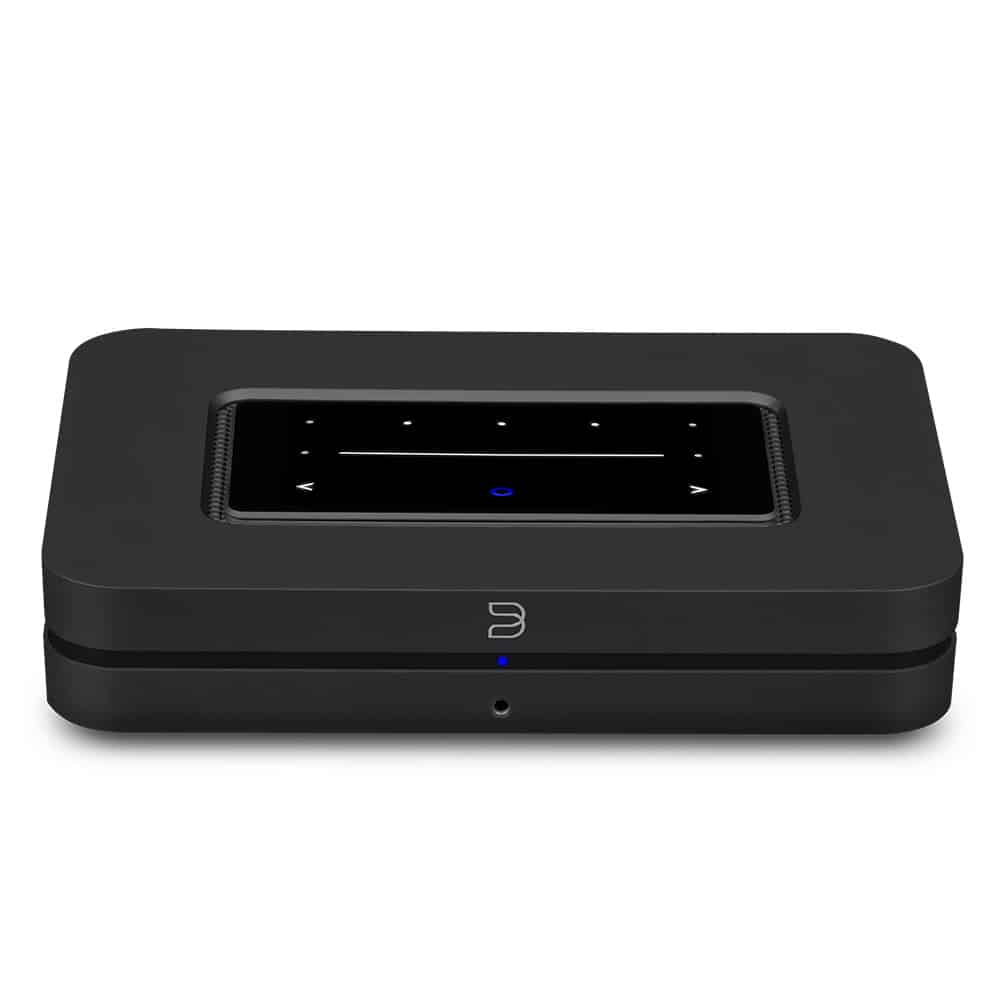
The Node is is a streamer that competes directly with the Sonos Port as a way to get streaming audio into your home audio system. $599
Hub:
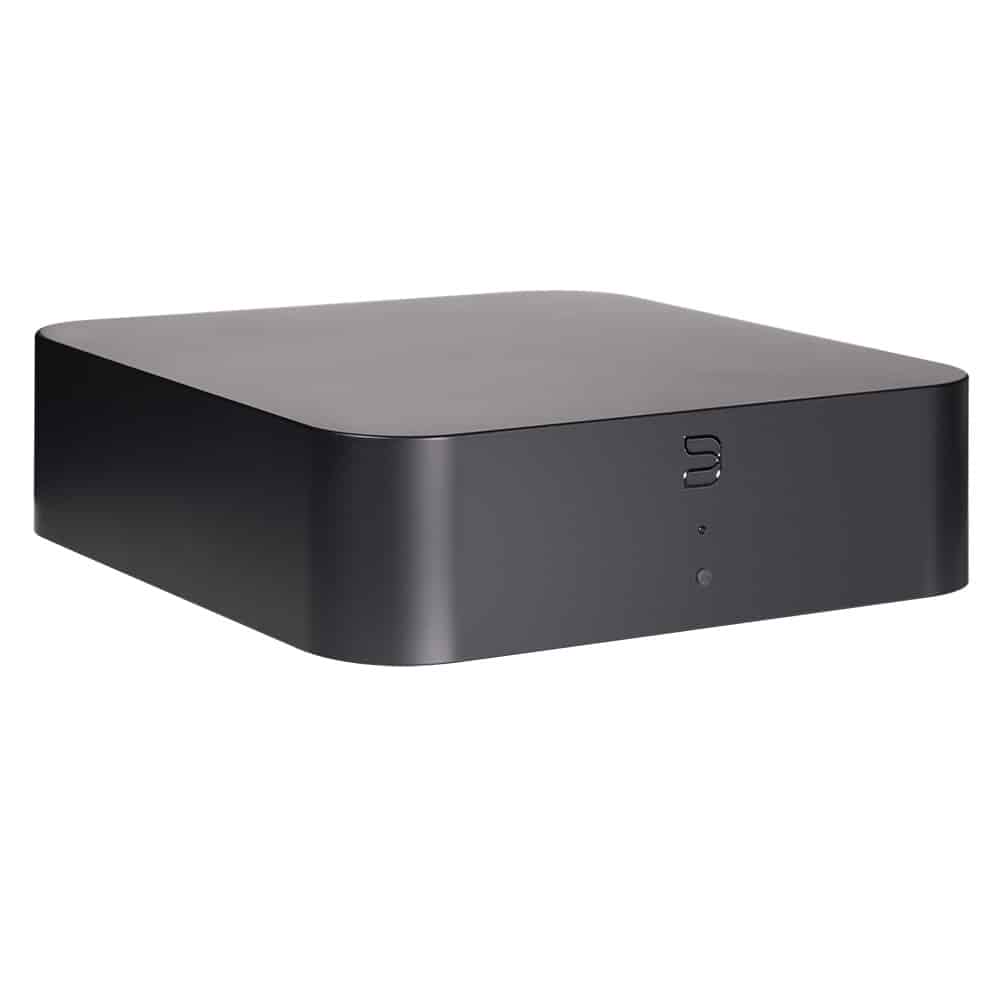
The hub isn’t really a streamer but is kind of a unique offering that allows you to bring an audio source into your Blue Sound network. You can install this behind a TV or pair it with a turn table. $319
Streamers with built-in amps:
Power Node:
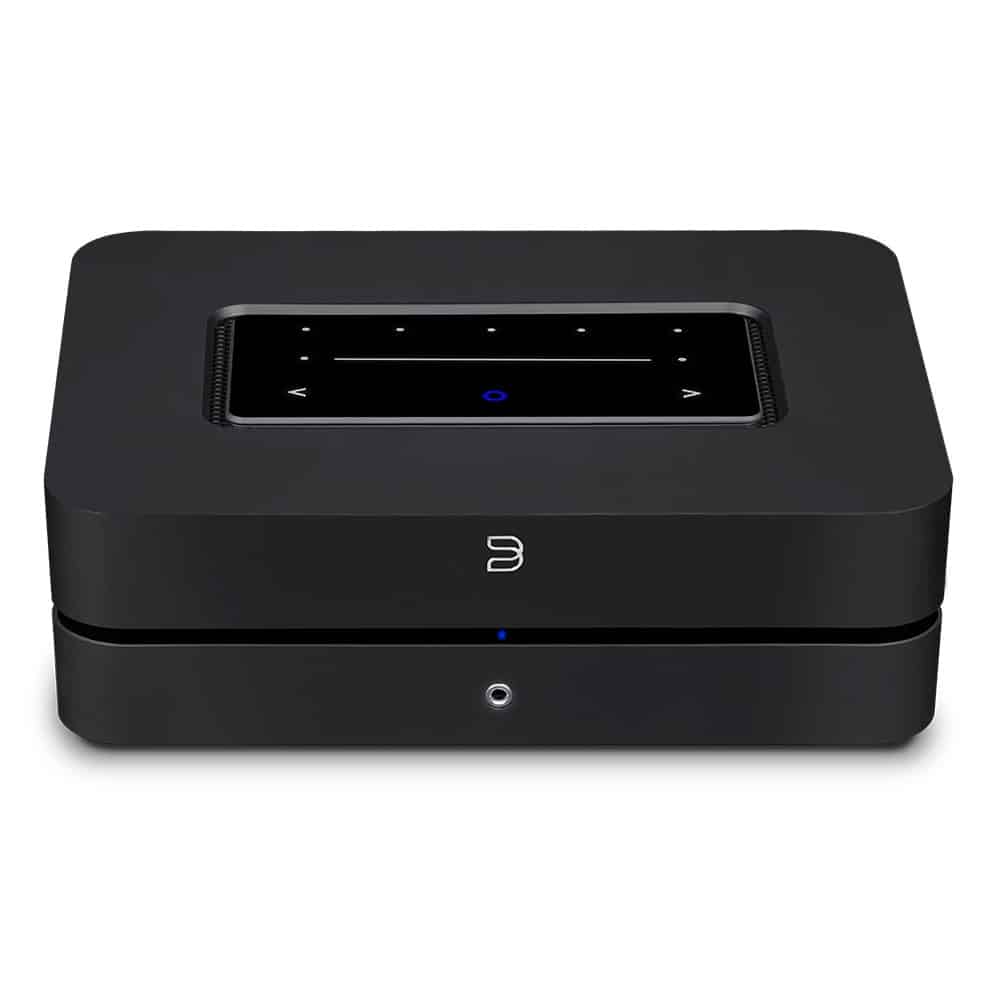
The Power Node is the BlueSound alternative to the Sonos Amp. It’s functionally very similar, but offers an upgraded signal path, hi-resolution audio, and plenty of power. $949
Power Node Edge:
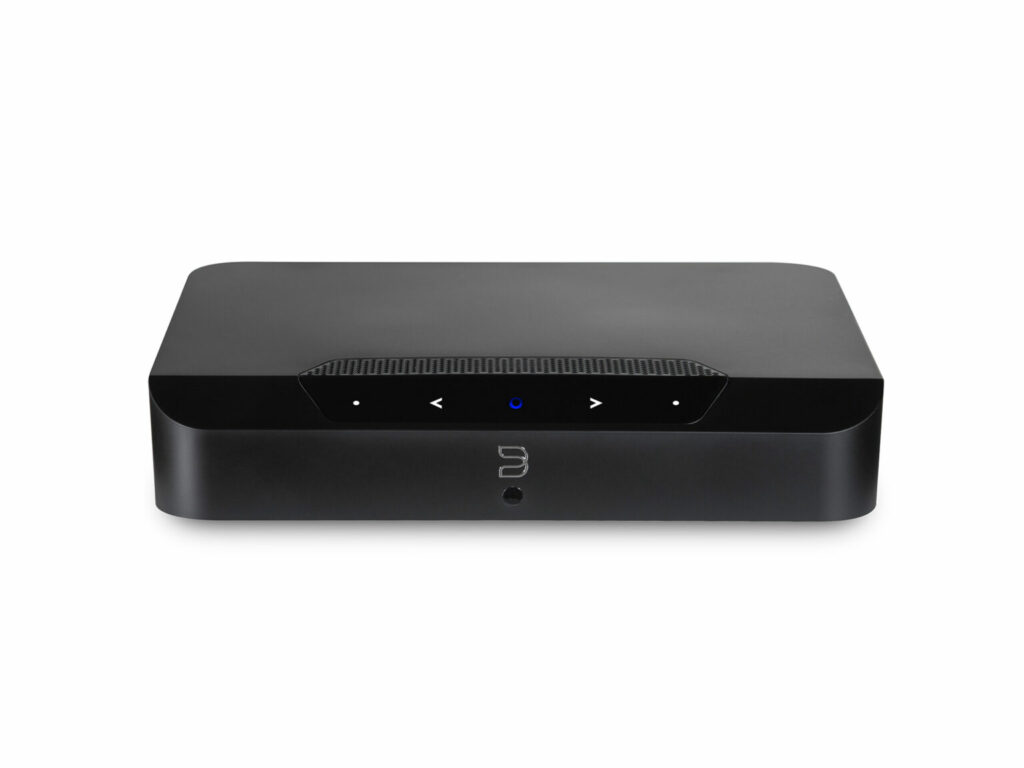
If you have a room that you’d like to incorporate into your system but don’t need quite as much power, the Power Node Edge is a great way to add a room without breaking the bank. Just announced in September of 2022, the Power Node Edge is only $650.
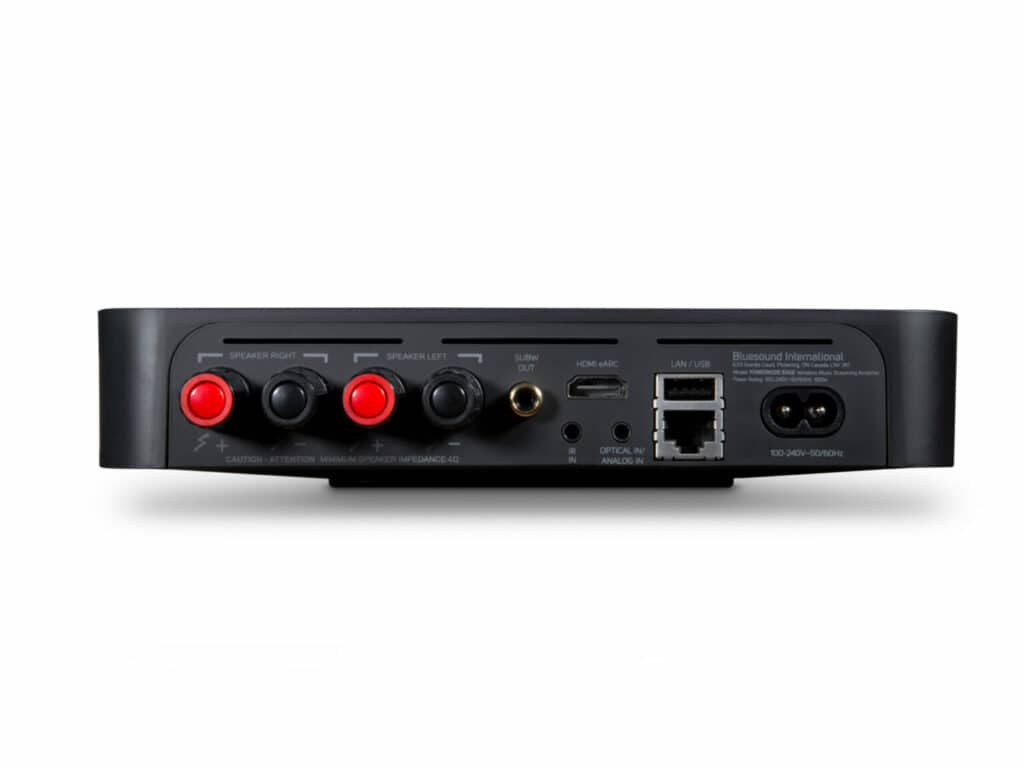
Soundbars:
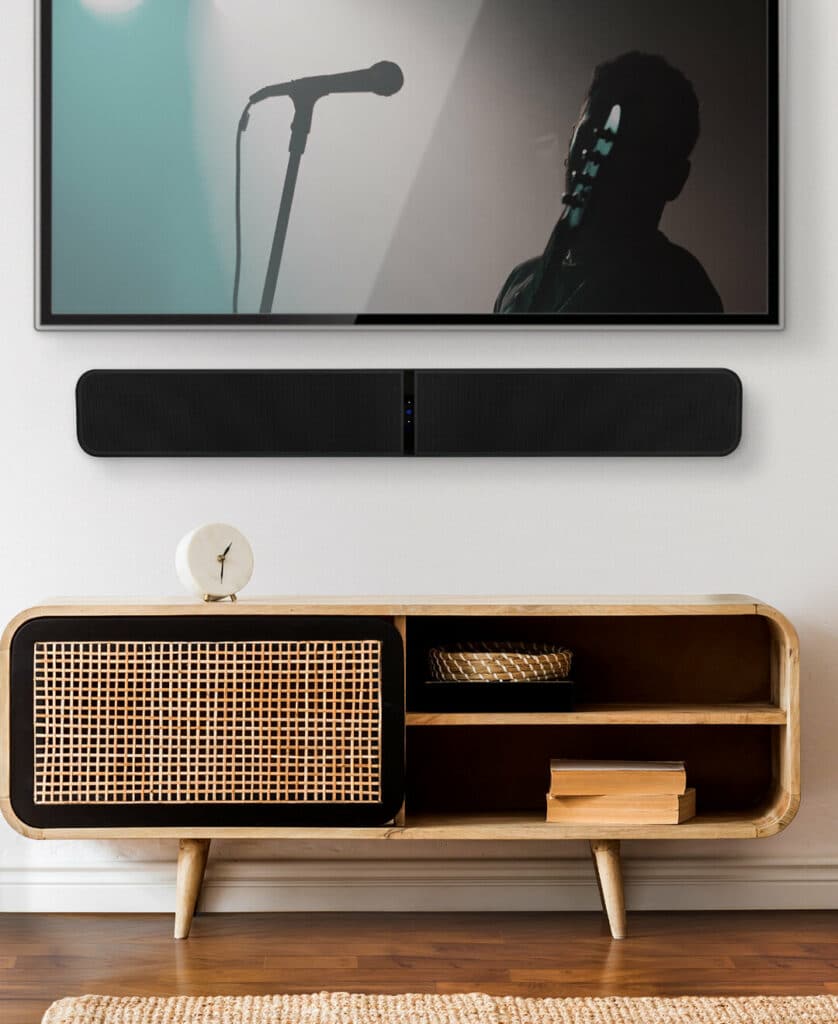
BlueSound has one sound bar option, the Soundbar+. This is, simply put, the best-sounding Soundbar I’ve ever heard. While soundbars are always an upgrade over pint-sized built-in TV speakers, the Soundbar+ is actually capable of enjoyable music playback and has a reasonable amount of bass.
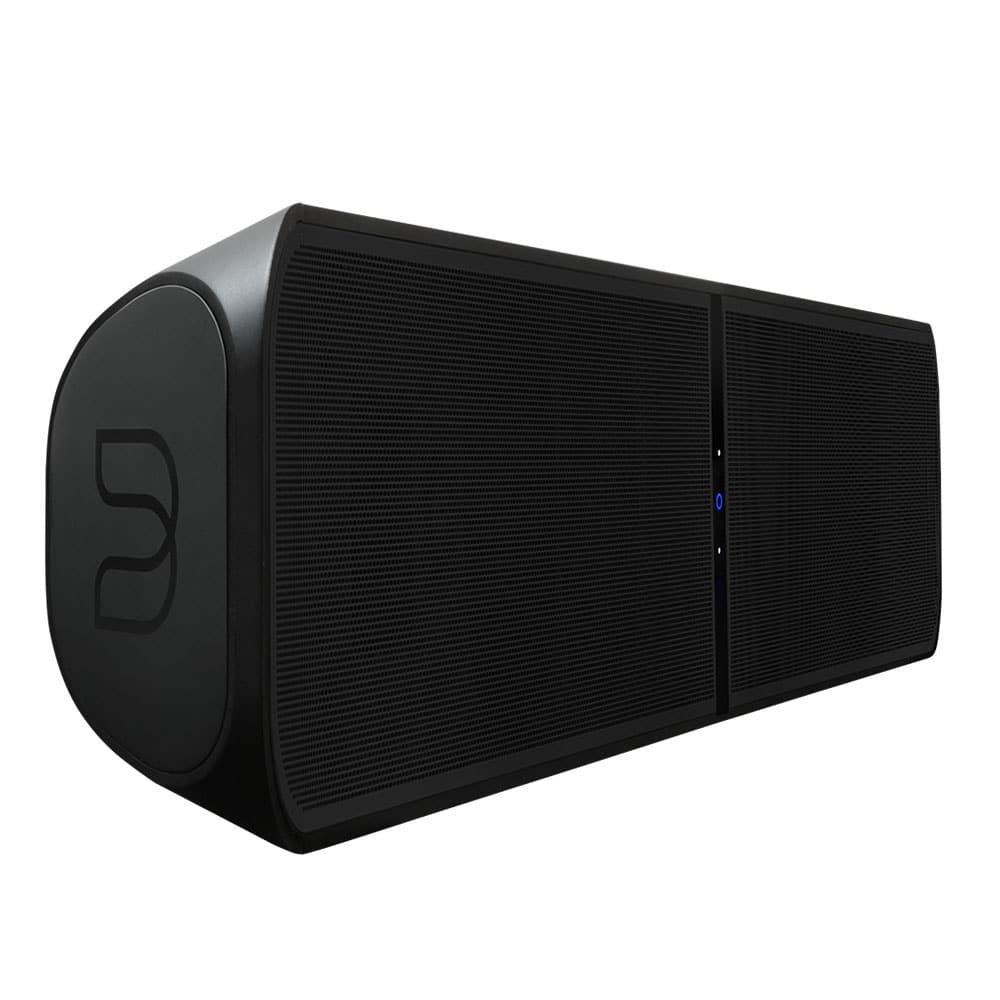
It’s physically taller than most at 5.5″ tall but also considerably more shallow. A wall mount is included in the box at no extra cost, and just like the Sonos Arc, the Soundbar+ offers a way to pipe your TV’s audio into the rest of your home.
At $899, it’s a great alternative to the Arc.
Portable Speakers:
Flex:
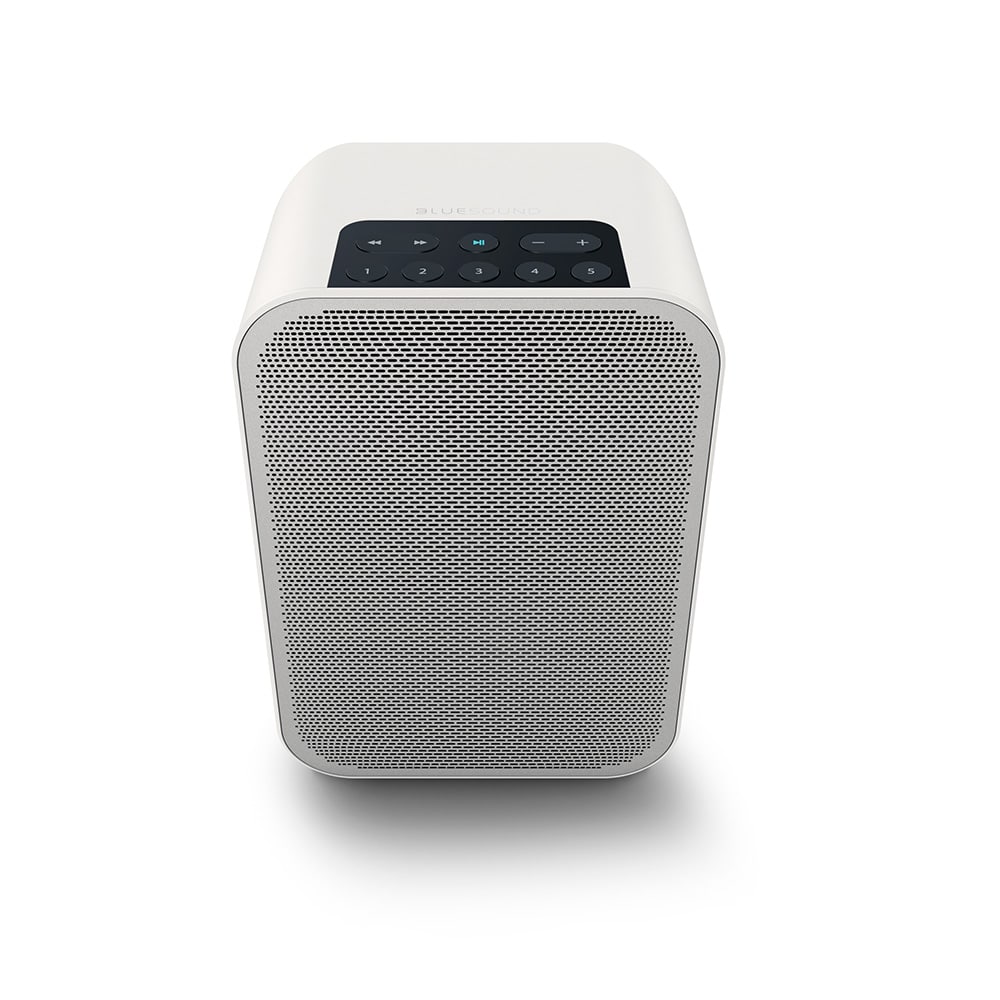
Mini:
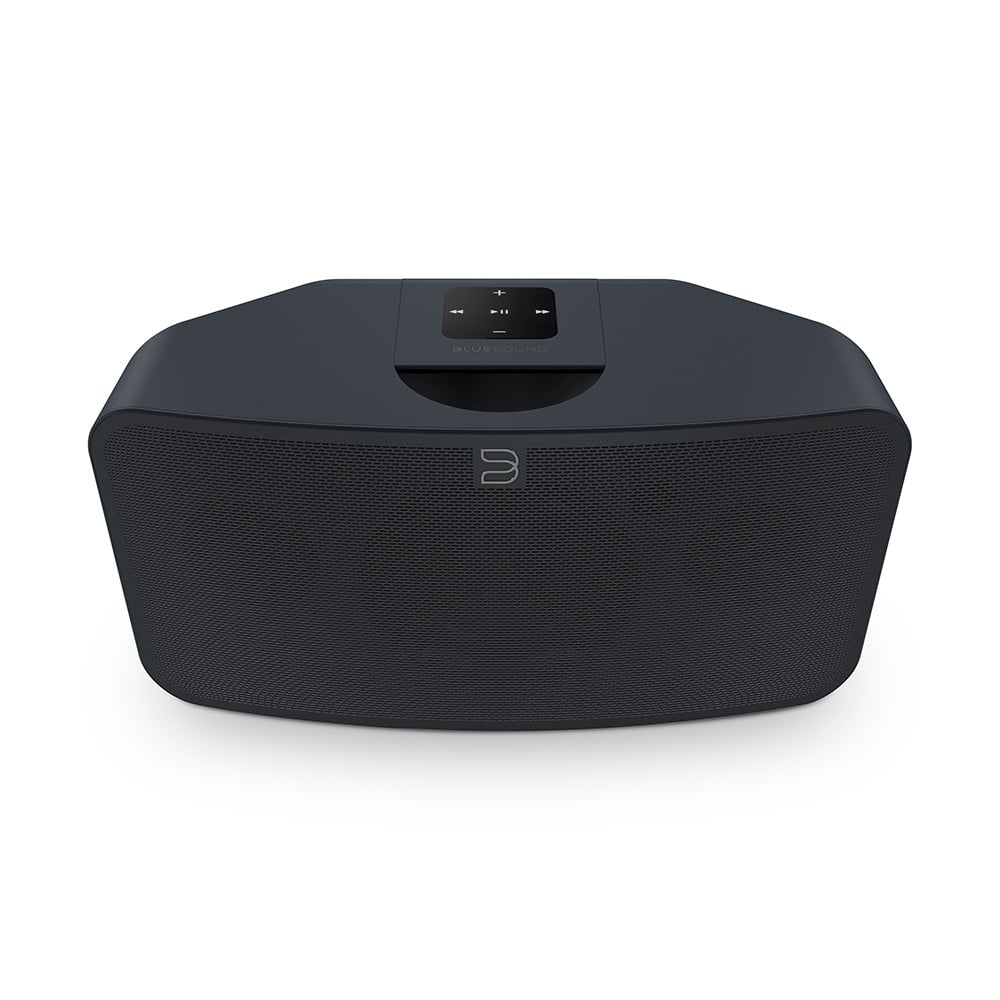
Pulse:
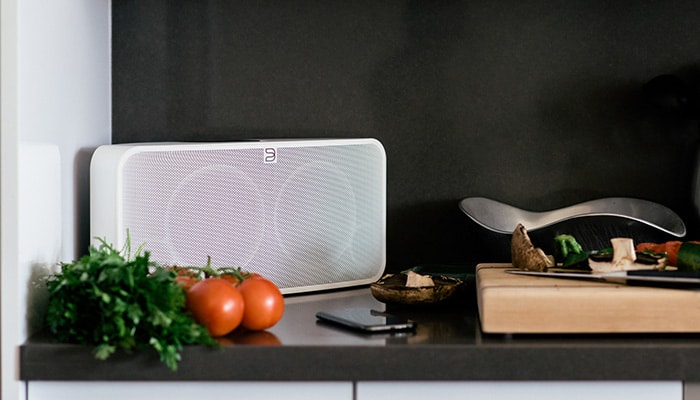
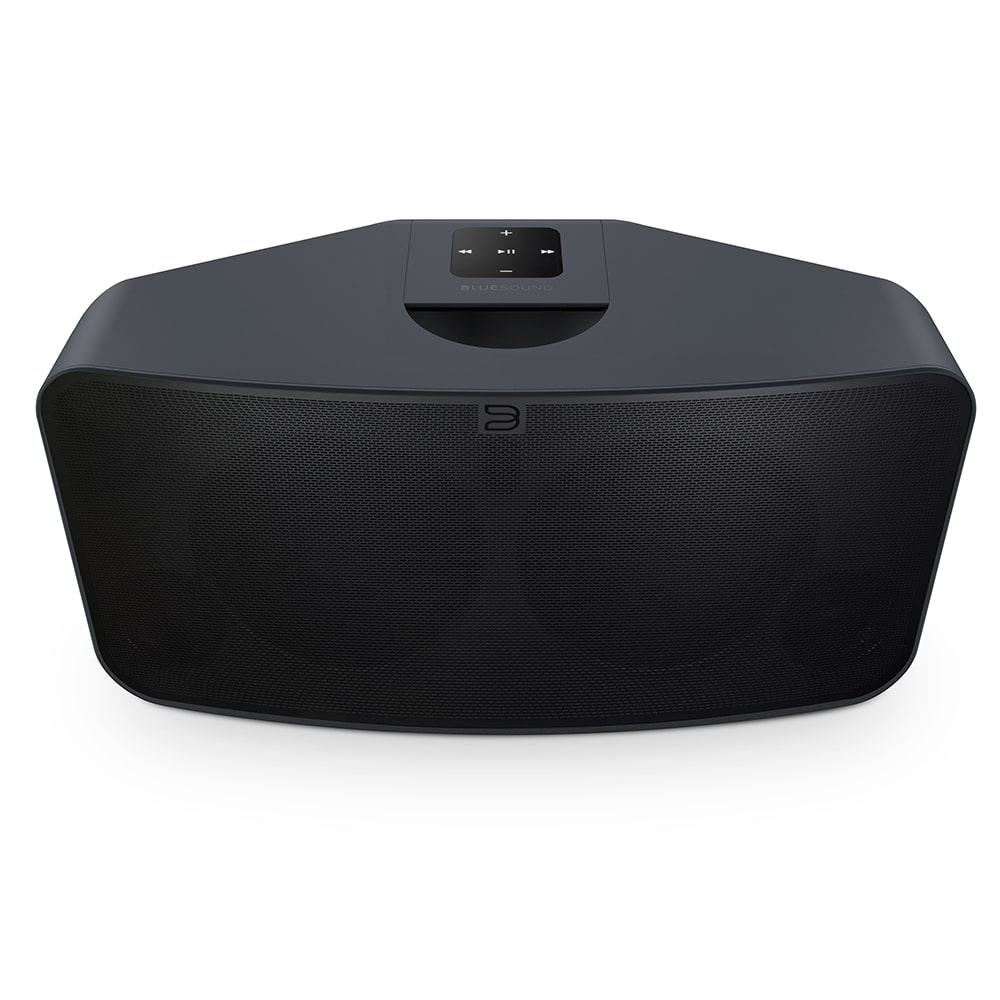
What you get with both BlueSound & Sonos:
- Reliable low-latency audio across your entire home
- Wireless and wired connectivity
- Sexy, well-designed applications for your phone
- Voice assistant control from Alexa, etc.
If any of the following are you, you should stick to Sonos:
- You’re an Apple Music user. Sonos has the monopoly on interfacing with Apple Music, and being forced into using Airplay is no fun.
- You aren’t subscribed to premium streaming sources and want to access Sonos’s vast library of radio stations. They’re very high-quality curated programming and don’t cost anything.
- You want the most extensive array of device options. Sonos has more models available to custom-tailor a system for your home.
- Cost is the deciding factor. While the two ecosystems’ pricing is close, Sonos is around 10-20% cheaper overall.
Final Thoughts and Conclusion
At the end of the day, if someone asks for Sonos, that is definitely plan A. They’re still the de facto standard for a good reason, and we know we’re installing a tried and true product that won’t lead to callbacks.
But, if they ask for “Sonos” and need it right now, or they’re looking for the next level in audio quality, we’re happy to have another solid option. Perhaps we could introduce you to our new friend from Canada, BlueSound.
If you have any questions about BlueSound products or need help designing a system for your home, please feel free to reach out! We’d love to put together a custom solution for you.
